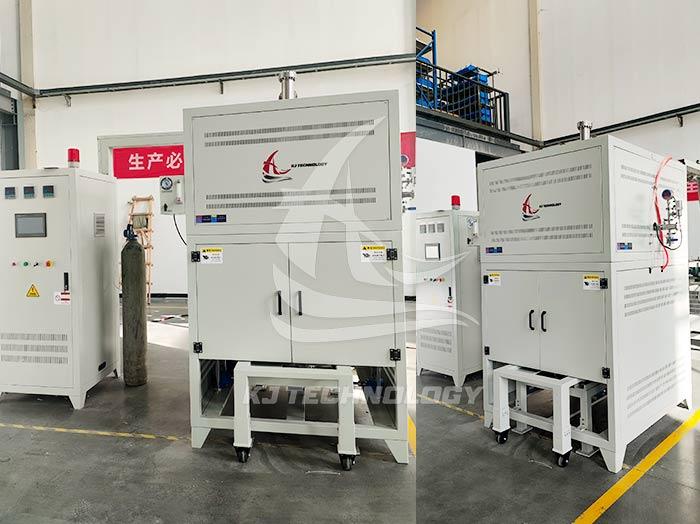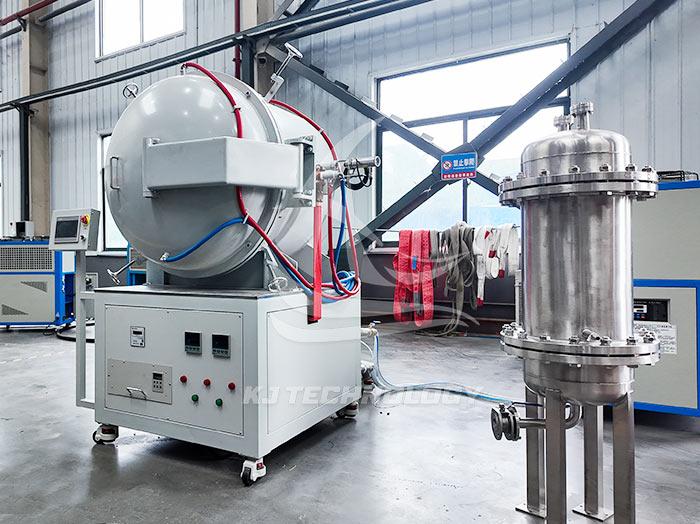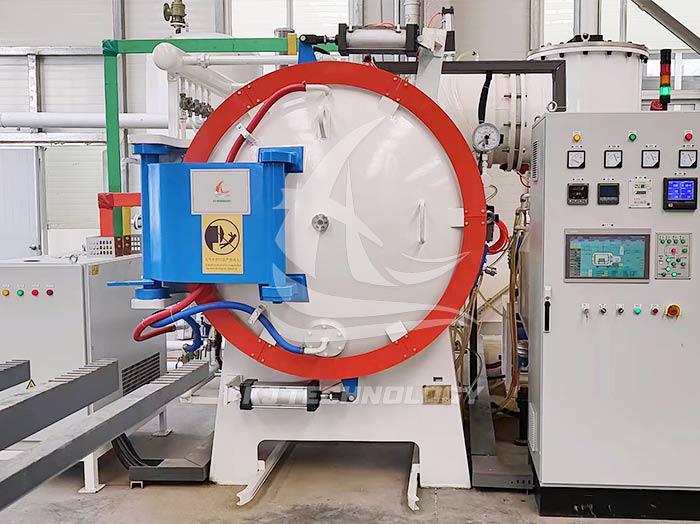What are the applications of large-scale industrial vacuum heat treatment?
 05-21-2025 Author: KJ technology
05-21-2025 Author: KJ technology
Industrial large-scale vacuum heat treatment has a wide range of applications in multiple fields, as follows:
1. Aviation industry: used for processing structural components such as aircraft wing beams, landing gear, high-strength bolts, etc. In the aviation brazing process, vacuum brazing can process complex and dense components with blind holes, remove gases that hinder the flow of brazing alloys, prevent the formation of oxide films, promote the wetting and flow of brazing alloys on the vacuum treated surface, and keep the components clean and bright when they are removed from the furnace, often without further treatment. Like honeycomb sealing components, they are made of various nickel based and cobalt based superalloys, which can withstand harsh environmental conditions. Their brazing needs to be carried out at specific temperatures and vacuum degrees. Common problems can be avoided by controlling component cleanliness, adopting correct setting methods, designing brazing processes reasonably, and operating vacuum furnaces correctly.
2. Mechanical manufacturing: Vacuum heat treatment is performed on gears, shafts, tools, fixtures, molds, etc. In terms of material processing for tools and molds, most tool and mold steels are heated in vacuum and cooled and quenched in gas. In order to achieve ideal mechanical properties on both the surface and interior of the workpiece, vacuum high-pressure gas quenching technology has become key.
3. Transportation (automotive and aviation) industry: Vacuum brazing produces a large number of components, and the use of lightweight high-strength materials has promoted the popularization of brazing. For example, heavy-duty truck axles are treated with low-pressure carburizing and oil quenching, while automotive transmission gears are treated with low-pressure carburizing and high-pressure gas quenching.
4. Weapon industry: Vacuum heat treatment can improve the quality and performance of weapon parts, meeting the strict requirements for material properties in weapon manufacturing.
5. Construction industry: Vacuum heat treatment is carried out on special metal components used in buildings to improve their strength, corrosion resistance, and other performance, ensuring the safety and durability of building structures.
6. Light industry: used to process metal components in light industry products, improve their performance, and enhance product quality.
7. Textile industry: Vacuum heat treatment is applied to metal components in textile machinery to enhance their wear resistance and service life, ensuring smooth textile production.
8. Chemical industry: Processing metal components in chemical equipment to adapt to harsh environments such as high temperature, high pressure, and corrosion in chemical production.
9. Petroleum industry: Vacuum heat treatment of metal parts in oil extraction and refining equipment to improve the reliability and stability of the parts.
10. Electronics industry: In the manufacturing of electronic components, vacuum heat treatment can be used to improve the conductivity, stability, and other properties of electronic components.
11. Electrical industry: Vacuum heat treatment is performed on metal components in electrical products to improve their quality and performance, ensuring the normal operation of electrical appliances.








